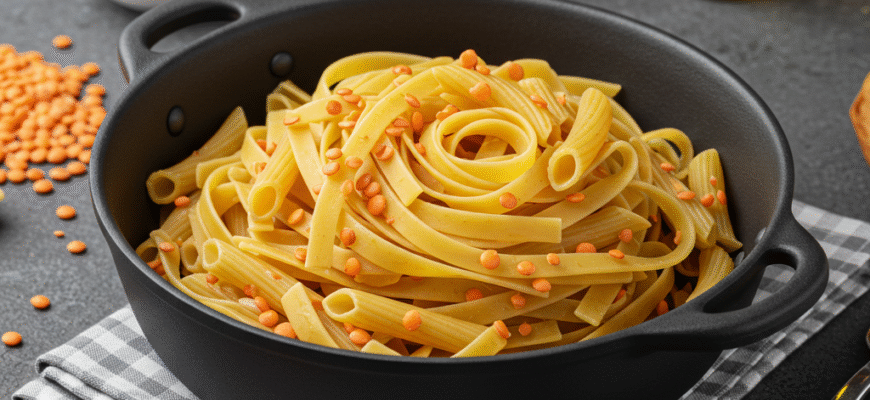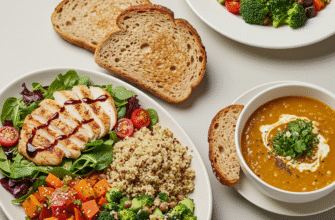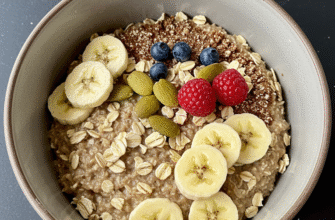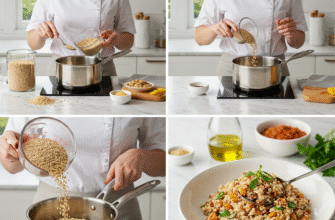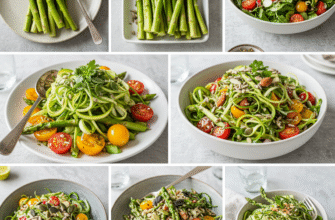Stepping into the world of alternative pastas can feel a bit like exploring a new culinary landscape. Among the rising stars is lentil pasta, a vibrant and nutritious option that’s been gaining serious traction. Forget the heavy feeling sometimes associated with traditional wheat pasta; lentil pasta offers a lighter, protein-packed experience that fits beautifully into many eating styles. Whether you’re gluten-free, looking to boost your plant-based protein intake, or simply curious, cooking with lentil pasta opens up a surprisingly versatile range of delicious meals.
Made primarily from lentil flour – often red or green, though other varieties exist – this pasta boasts an impressive nutritional profile. It’s naturally high in protein and dietary fiber, two components that contribute to satiety and digestive health. This makes it a fantastic choice for anyone seeking a more filling meal without necessarily increasing portion size. Unlike many gluten-free pastas that can be low in nutrients, lentil pasta delivers a solid dose of iron and other essential minerals found in legumes.
Getting to Know Lentil Pasta
Before you dive into cooking, it helps to understand what makes lentil pasta unique. Its texture is generally firmer than wheat pasta when cooked al dente, offering a pleasant bite. However, it can also cook much faster, making it crucial to keep an eye on the pot. The flavor is subtly earthy, characteristic of lentils, but usually mild enough not to overpower your chosen sauce. Red lentil pasta tends to be slightly softer and milder in flavor compared to green or brown lentil varieties, which often have a more pronounced taste and firmer texture.
Why Make the Switch?
There are compelling reasons to add lentil pasta to your pantry staples:
- Nutrient Density: As mentioned, it’s a powerhouse of protein and fiber compared to traditional pasta. This helps stabilize blood sugar levels and keeps you feeling full longer.
- Gluten-Free Goodness: For individuals with celiac disease or gluten sensitivity, it’s a safe and satisfying alternative.
- Plant-Based Power: It provides a substantial amount of plant-based protein, crucial for vegetarian and vegan diets.
- Quick Cooking: Most varieties cook in under 10 minutes, making them perfect for speedy weeknight meals.
- Versatility: Just like regular pasta, it pairs well with a vast array of sauces and ingredients.
Mastering the Cooking Process
Cooking lentil pasta isn’t complicated, but it requires a bit more attention than cooking traditional durum wheat pasta. The key is avoiding overcooking, which can lead to a mushy texture. Bring a large pot of water to a rolling boil – use plenty of water, even more than you might for regular pasta, as lentil pasta can sometimes foam up more. Salt the water generously; this enhances the pasta’s flavor from the inside out.
Add the pasta to the boiling water and stir immediately to prevent sticking. Now, pay close attention to the package instructions, but treat them as a guideline. Often, lentil pasta cooks a minute or two
faster than the shortest time suggested. Start testing for doneness about 2-3 minutes before the recommended minimum time. You’re looking for an ‘al dente’ texture – tender but still firm to the bite. Remember, it will continue to cook slightly even after draining, especially if mixed with a hot sauce.
Pay close attention to cooking time! Lentil pasta cooks much faster than traditional wheat pasta. Start checking for doneness several minutes before the package instructions suggest. Overcooking can result in a soft, mushy texture that falls apart easily. Always drain immediately once it reaches your desired firmness.
Some brands are prone to foaming. Using a large pot helps, but if foam becomes excessive, you can turn the heat down slightly (while maintaining a boil) or skim it off. Once cooked, drain the pasta immediately using a colander. Do
not rinse it unless you’re specifically making a cold pasta salad. Rinsing washes away starch that helps sauces cling beautifully. Toss it with your sauce right away to prevent sticking.
Perfect Pairings: Sauces and Flavors
The slightly earthy undertone of lentil pasta pairs wonderfully with robust, flavorful sauces. Think beyond simple marinara (though that works too!). Here are some ideas to get your creativity flowing:
Hearty & Rich Sauces
Because lentil pasta is substantial, it stands up well to hearty sauces:
- Bolognese: A classic meat or lentil-based bolognese is a fantastic match. The richness complements the pasta’s texture.
- Mushroom Ragù: A savory, umami-packed mushroom sauce, perhaps with garlic, herbs, and a touch of cream or wine, is divine.
- Creamy Tomato Sauces: A rosé sauce or a tomato sauce enriched with cashew cream or coconut milk works beautifully, softening the pasta’s earthiness.
Fresh & Vibrant Options
Lighter sauces also shine, especially during warmer months:
- Pesto Perfection: Classic basil pesto, sun-dried tomato pesto, or even a kale and walnut pesto clings well and adds brightness. Add some cherry tomatoes or roasted vegetables for extra color and nutrients.
- Lemon-Garlic & Greens: A simple sauce of olive oil, sautéed garlic, lemon zest and juice, tossed with wilted spinach or kale and perhaps some chili flakes, is light yet flavorful.
- Avocado Cream Sauce: Blend ripe avocado with garlic, lemon juice, olive oil, and herbs for a quick, creamy, no-cook sauce.
- Mediterranean Medley: Toss with olive oil, Kalamata olives, sun-dried tomatoes, feta cheese (or a vegan alternative), artichoke hearts, and fresh oregano.
Beyond Traditional Sauces
Think outside the sauce jar! Lentil pasta works great in:
- Pasta Salads: Its firm texture holds up well in cold salads. Combine with chopped veggies, a vinaigrette, and maybe some chickpeas or grilled chicken. Just be sure not to overcook it initially.
- Stir-fries (Fusion Style): Use cooked lentil pasta spirals or penne instead of noodles in a vegetable stir-fry with an Asian-inspired sauce (soy, ginger, garlic, sesame oil).
- Mac and Cheese: Yes, you can make mac and cheese! A sharp cheddar or a creamy cashew-based vegan cheese sauce pairs surprisingly well. Add nutritional yeast for extra cheesy flavor.
Tips for Terrific Lentil Pasta Meals
To ensure your lentil pasta dishes are always a success, keep these final pointers in mind:
- Don’t Undersalt the Water: Pasta absorbs water as it cooks, so salting the water is your primary chance to season the pasta itself.
- Watch the Pot: Seriously, don’t wander off. Set a timer for a few minutes less than the package says and stay close.
- Taste Test Frequently: Start tasting for doneness early and often. ‘Al dente’ is usually the goal.
- Sauce Readiness: Have your sauce ready or nearly ready when the pasta is done cooking. You want to combine them quickly.
- Reserve Pasta Water (Optional but Recommended): Before draining completely, scoop out a cup of the starchy cooking water. Adding a splash or two to your sauce can help it emulsify and cling better to the pasta.
- Experiment: Don’t be afraid to try different lentil types (red vs. green) and various sauce combinations to find your favorites.
Cooking with lentil pasta is an easy and rewarding way to boost the nutritional value of your meals without sacrificing flavor or satisfaction. Its quick cooking time makes it a weeknight hero, and its versatility ensures it can fit into countless recipes. Embrace the slightly different texture and flavor, pay attention during the brief cooking process, and you’ll soon find yourself reaching for that bag of lentil pasta again and again. It’s a simple swap that offers significant benefits, making healthy eating both delicious and convenient.

